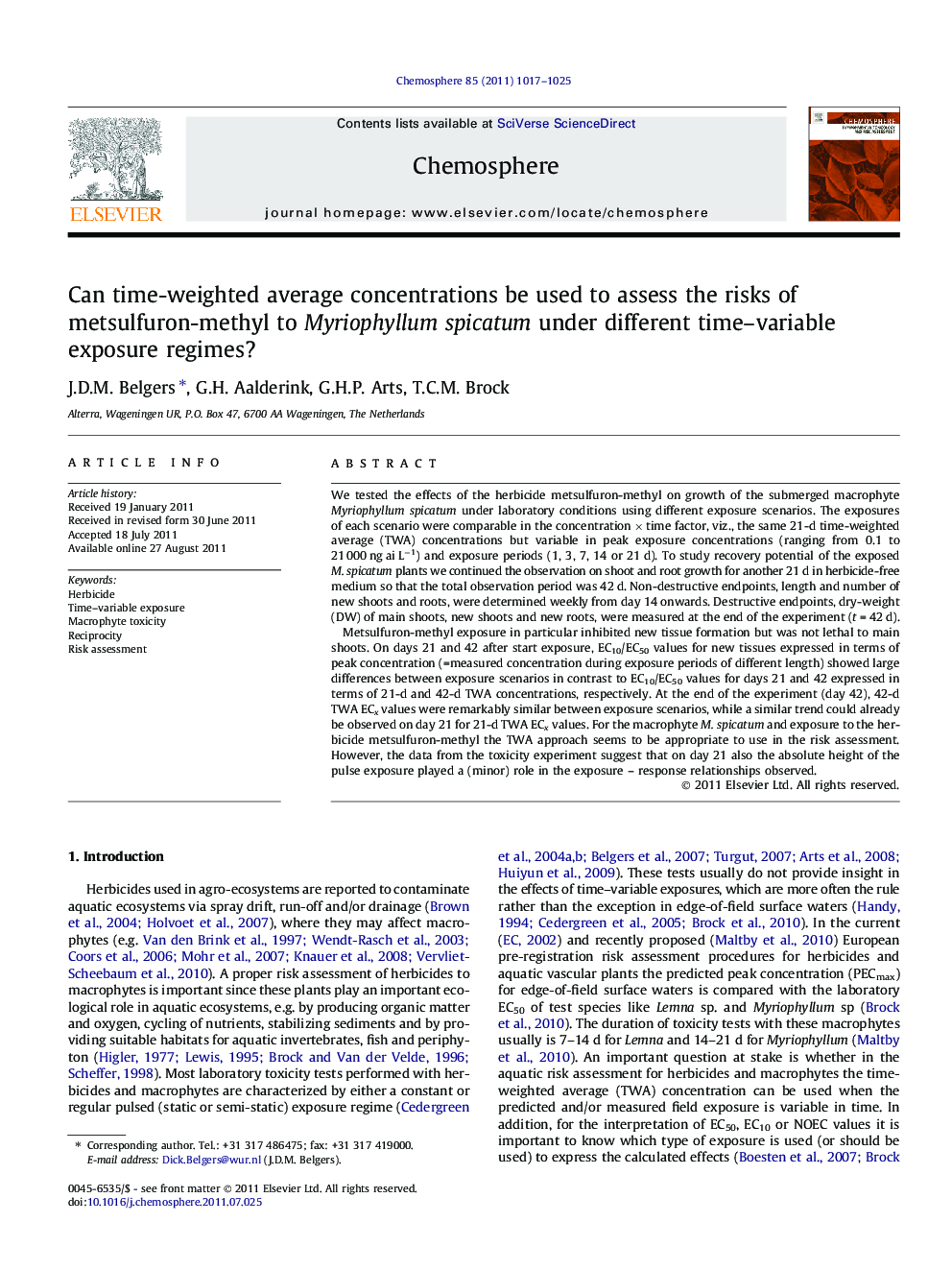| کد مقاله | کد نشریه | سال انتشار | مقاله انگلیسی | نسخه تمام متن |
|---|---|---|---|---|
| 4410719 | 1307561 | 2011 | 9 صفحه PDF | دانلود رایگان |

We tested the effects of the herbicide metsulfuron-methyl on growth of the submerged macrophyte Myriophyllum spicatum under laboratory conditions using different exposure scenarios. The exposures of each scenario were comparable in the concentration × time factor, viz., the same 21-d time-weighted average (TWA) concentrations but variable in peak exposure concentrations (ranging from 0.1 to 21 000 ng ai L−1) and exposure periods (1, 3, 7, 14 or 21 d). To study recovery potential of the exposed M. spicatum plants we continued the observation on shoot and root growth for another 21 d in herbicide-free medium so that the total observation period was 42 d. Non-destructive endpoints, length and number of new shoots and roots, were determined weekly from day 14 onwards. Destructive endpoints, dry-weight (DW) of main shoots, new shoots and new roots, were measured at the end of the experiment (t = 42 d).Metsulfuron-methyl exposure in particular inhibited new tissue formation but was not lethal to main shoots. On days 21 and 42 after start exposure, EC10/EC50 values for new tissues expressed in terms of peak concentration (=measured concentration during exposure periods of different length) showed large differences between exposure scenarios in contrast to EC10/EC50 values for days 21 and 42 expressed in terms of 21-d and 42-d TWA concentrations, respectively. At the end of the experiment (day 42), 42-d TWA ECx values were remarkably similar between exposure scenarios, while a similar trend could already be observed on day 21 for 21-d TWA ECx values. For the macrophyte M. spicatum and exposure to the herbicide metsulfuron-methyl the TWA approach seems to be appropriate to use in the risk assessment. However, the data from the toxicity experiment suggest that on day 21 also the absolute height of the pulse exposure played a (minor) role in the exposure – response relationships observed.
► Metsulfuron methyl predominantly affected new tissue formatting in the macrophyte Myriophyllum spicatum.
► Exposure-response reciprocity largely explains the effects of time-variable exposure to metsulfuron methyl in long-term experiments.
► For M. spicatum and metsulfuron-metyl the TWA approach seems to be appropriate to use in the long-term risk assessment.
Journal: Chemosphere - Volume 85, Issue 6, October 2011, Pages 1017–1025